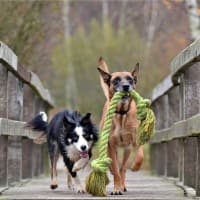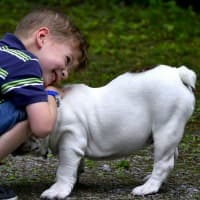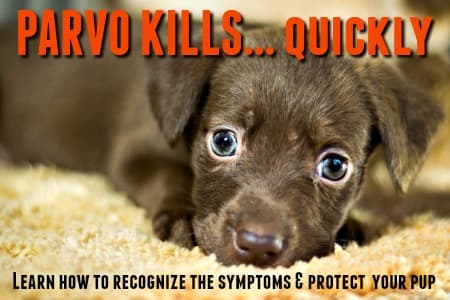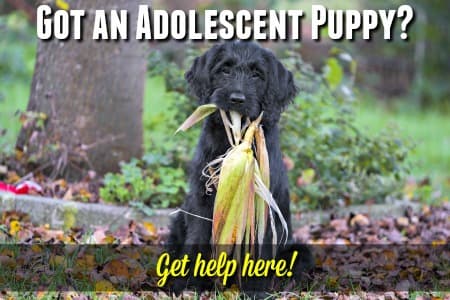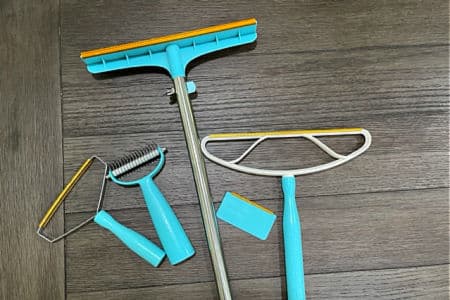FYI: If you buy something through a link on this site I may earn a commission - at NO extra cost to you.
All About Hairless Dogs
Hairless dogs are popular with people who have allergies, but they make great family companions for just about anyone.
There's no such thing as a 100% allergy-free dog breed, but dogs who have no (or very little) hair are about as close as you can get!
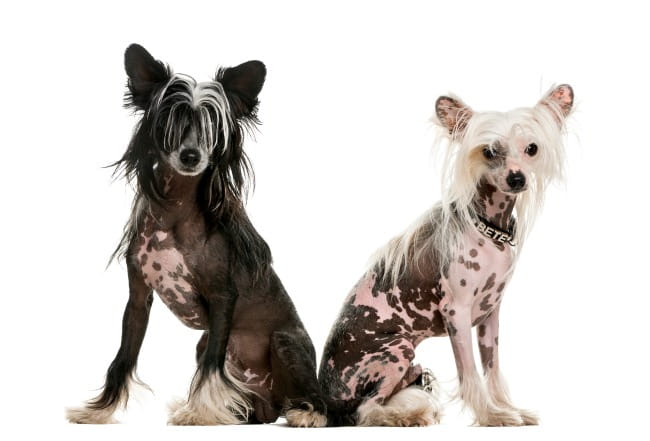 Chinese Crested
Chinese CrestedIn addition to limited shedding (or non shedding), these breeds are pretty much dander-free as well. Of course they do still have saliva, which can trigger allergies in some people, so are not truly hypoallergenic (no dog is).
Dogs without hair are clean, odorless, intelligent, loving, athletic.... and a whole lot more.
The hairless dog breeds you're most likely to see here in the USA include the:
There are some interesting similarities between 'naked' dogs of different breeds and origins, these include:
- Most
of them are very old, even ancient breeds, some dating back thousands
of years being kept, and revered, by ancient civilizations
- These older breeds were often considered to be 'magical' or to possess special healing powers. This is likely because their hairless bodies give off a very comforting heat which helps with aches and pains such as rheumatism or arthritis, plus they kept their ancient owners warm at night!
- Their naked skin needs special care and requires regular (gentle) bathing, moisturizing and sunscreen or warm clothing to protect it from the elements
- They are the ultimate in hypoallergenic dog breeds as the hairless variety of each breed doesn't shed and has minimal dander to trigger allergies
- Many of these breeds have canine dental problems and their teeth have shallow roots and decay easily. The hairless Chinese Crested has particularly primitive canines known as 'tusks'.
- They are clean, odorless and don't suffer from fleas (due to their lack of hair!), but they can get ticks.
But of course ALL dogs are different in lots of ways - size, temperament, drive, ability, personality and so on. Every single pup is unique and although they carry the breed-specific traits of their ancestors, there's still a fair bit of variation from puppy to puppy.
The American Hairless Terrier
The newest of these dog breeds, the AHT may not look like your average terrier, but it has all the energy, spunk, intelligence, courage, humor and personality of the typical terrier.
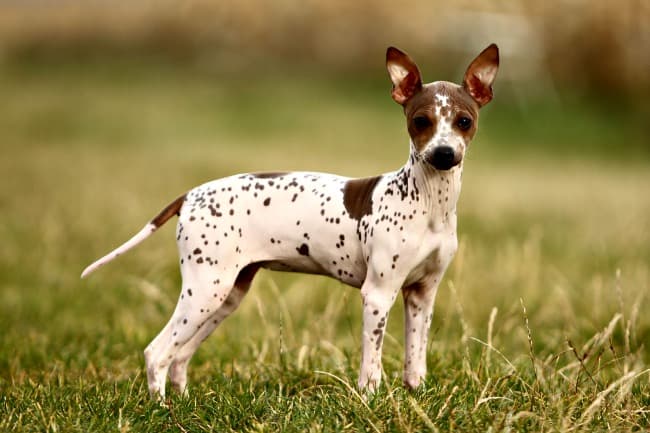 American Hairless Terrier
American Hairless TerrierThe breed originated in Louisiana, USA, with a hairless pup produced by a breeding between two 'coated' (with hair as opposed to hairless) Rat Terriers during the 1970's.
Since then, the owner of that first litter has continued to develop the breed and it is arguably the sturdiest and healthiest of the hairless dog breeds. In 2017 this was the most recent of the hairless dog breeds to be accepted into the AKC.
Although known as American Hairless Terriers, both coated and hairless pups can be born in the same litter.
The 'hairless' gene is recessive, and if two hairless dogs are mated the puppies will also be hairless, but if a hairless dog is mated to a coated dog the resulting puppies could be hairless... or not.
'Coated' AHT's have short, dense hair which can come in a wide range of colors and color combinations.
The 'hairless' variety are truly hairless dogs and are probably the top contender in terms of the truly hypoallergenic dog breeds. They have no hair at all (except for fine eyebrows and whiskers), and a very minimal amount of dander.
AHT's have soft skin which is usually pink with colored spots or patches, usually black, brown, gray, red or gold.
Their skin is less prone to the sensitivities and more major skin issues that some hairless dogs suffer from, but it does need to be protected from extreme weather conditions - requiring sunscreen in the summer, and warm clothing in the winter!
Grooming the dogs who don't have any hair consists of bathing with a very gentle shampoo, and applying moisturizer sparingly. They do sweat and can get a heat-rash, and are fairly susceptible to other dog allergies and allergy-related rashes as well.
Without a protective covering of hair, their skin is easily scratched or damaged and as they're active little dogs they need a certain amount of supervision.
They generally reach a height of between 7 and 18 inches, and a weight of anywhere between 5 and 16lbs.
The American Hairless Terrier makes a lively and friendly family pet and is very trainable.
Active,energetic, smart, curious, eager to please and always ready to play, this is a hairless dog breed is great with children too... an all-round great choice for any family, especially if you're looking for one of the hypoallergenic dog breeds.
You can check out the website for the American Hairless Terrier Club of America (www.ahtca.info) for comprehensive information about this breed.
The Chinese Crested
There is some debate about whether this breed originated in China, or was brought there from Africa developing from the original African Hairless Terrier.
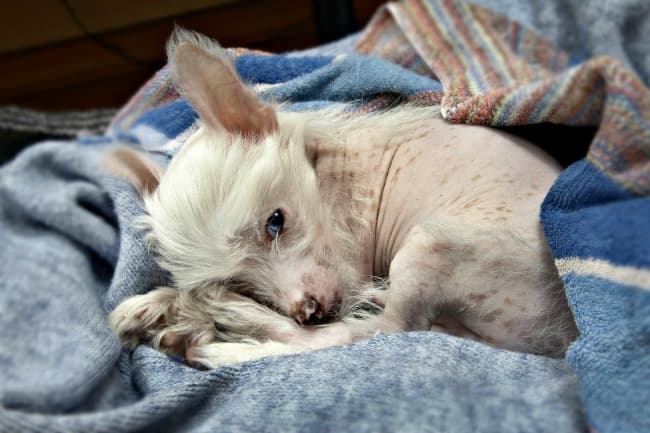 Chinese Crested puppy
Chinese Crested puppyProbably the most well-known and popular of hairless breeds, the Chinese Crested is another of the hairless dog breeds that also comes in a 'coated' variety. In 1991 it was the first of the hairless dogs to be accepted into the AKC.
There is the hairless Chinese Crested, which actually isn't totally without hair but has long, silky 'plumes' on its' head, feet and the end of its' tail.
Then there's the 'Powder Puff' Chinese Crested which has the long, soft, silky hair all over its' body. The skin and coat of these 'hairless' dogs can be just about any solid color, or can have a mix of colors, spots, patches etc.
Both hairless and powder puff puppies can be born in the same litter, and each dog (coated or hairless) carries genes for both varieties. However, unlike the AHT, if a puppy inherits two 'hairless' genes it won't survive.
Whereas the AHT has the characteristics of a terrier, the Chinese Crested is more of a hound-type breed. They're light boned, delicate-looking dogs but are stronger than they look.
Alert, active, playful and affectionate, Chinese Crested are good with children and they're very smart, so learn obedience commands quickly and can often be taught tricks without difficulty.
These dogs have sensitive skin are prone to skin problems, rashes, irritation and sunburn. Gentle shampoos, regular moisturizing and a good sunscreen are essential... as are a warm sweater or jacket during cold weather.
The Powder Puff dogs need daily grooming to prevent their long, fine hair from getting tangled or matted. Although the hairless variety are more likely to be regarded as one of the non allergic dog breeds, the Powder Puff sheds very little and is still a great choice for allergy sufferers.
They also tend to have dental issues, with teeth that decay easily and may be prone to allergies.
An average Chinese Crested will reach an adult height of between 10 and 13 inches, and weigh an average of 10lbs.
The American Chinese Crested Club (www. american.chinesecrestedclub.info) is rich in information about this breed and well worth a visit.
Peruvian Inca Orchid
Originating in Peru, these dogs are also known as the Peruvian Hairless Dog, the Inca Hairless Dog or the Perro Calato. It's a very old breed, dating perhaps as far back as 750AD.
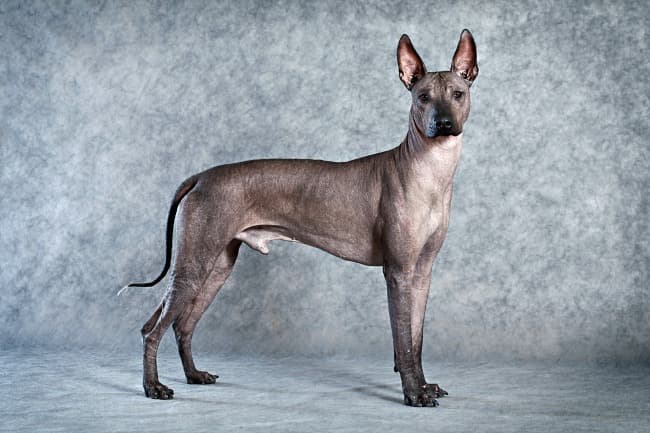 Peruvian Inca Orchid (Hairless)
Peruvian Inca Orchid (Hairless)The PIO breed was accepted for AKC registration in 2010
Peruvian Inca Orchids can be hairless or coated, and the hairless dogs have fine, whispy hair on the very top of their heads, and sometimes on their ears. Both types can be born in the same litter.
The skin and coat can be just about any solid color, pink with 'freckles. or patches of color, or mottled/spotted in any color-combination.
The hairless variety has skin which needs the same care as the other hairless dog breeds - bathing with gentle shampoo or soap, moisturizing and protection from the elements.
Like the Chinese Crested, this breed of hairless dogs are hounds - and the Peruvian Inca Orchid is a sighthound (as opposed to a scenthound). This means that they love to chase other small, quick moving animals but usually get along great with other dogs.
However, they're very intelligent, quick to learn, eager to please, gentle, quiet and good with children. They're fairly hardy and healthy overall but have the same dental problems that afflict most hairless breeds.
These dogs grow a bit larger than the Chinese Crested, or American Hairless Terrier, maturing at between 17 and 26 inches, and 26 - 50 lbs.
The Peruvian Inca Orchid Club of the United States is the AKC's parent club for this breed.
Xoloitzcuintli
Originating in Mexico, the Xoloitzcuintle (pronounced 'show-low-eats-queent-lee') is also known as the Mexican Hairless Dog or Xolo, and is another ancient breed - possibly pre-dating the Aztec civilization over 3000 years ago. This breed was accepted into the AKC in 2011.
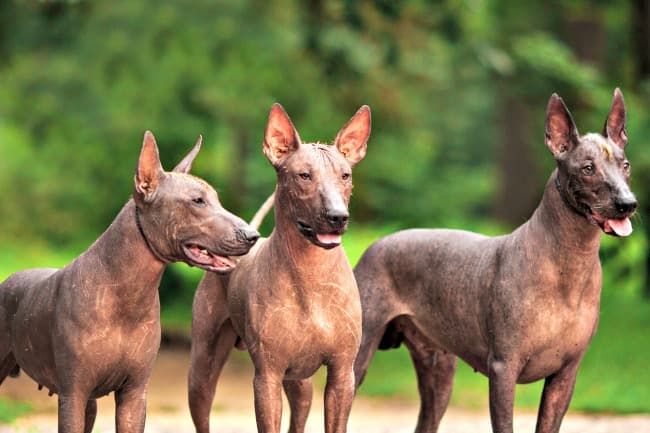 Mexican Xoloitzcuintli
Mexican XoloitzcuintliAgain, this hairless dog breed has both the naked
and coated varieties.
The skin or coat comes in a range of colors, including black, gray, brown, brindle, fawn, red and more. Solid colors or a mottled/spotted effect are acceptable. These hairless dogs also comes in three different sizes - Toy, Miniature and Standard.
A combination of both sighthound and terrier, the Xolo is a energetic and athletic, highly intelligent, and very loyal and affectionate. Many owners find these dogs do exceptionally well in formal dog obedience and dog agility and also make excellent therapy dogs.
They make great family pets, but do need a lot of exercise and firm boundaries (both in terms of behavior and geographical limitations such as fencing!). They bond very closely to their owners and are a good example of what I call a 'velcro dog' - always at your heels.
The hairless variety needs skin care as described for the other hairless dog breeds above - bathing with a gentle shampoo and regular moisturizing to keep it supple and soft, but the Xolos' skin is less sensitive and hardier than that of the other breeds .
Xolo's also need sunscreen and protection from extreme weather/temperatures. The coated variety has short, sleek fur which needs minimal grooming, the naked dogs sometimes have thin, whispy hair on their head and tail.
Another of the 'hypoallergenic dog breeds', the naked variety don't shed and have minimal dander and the coated variety shed very little too.
The Xoloitzcuintli is probably the healthiest and most robust of the hairless breeds, and makes a loving and loyal family pet. Best suited to homes where they will get plenty of attention, training and socialization... plus a good helping of daily exercise to keep them mentally and physically fit.
This breed also has protective tendencies and can be a very alert and watchful guardian.
This breed has a range of sizes:
- Toy Xolo mature at from 9 - 13 inches and 5 - 18 lbs
- Miniature Xolo mature at 13 - 20 inches and 13 - 30 lbs
- Standard Xolo mature at aroudn 30 inches and 20 - 40 lbs
The Xoloitzcuintli Club of America (www.xoloitzcuintliclubofamerica.org) has a wealth of information about this breed and includes breeder, and rescue organization, information.
Is A Hairless Dog Right For You?
You definitely don't need to have allergies to appreciate these rare, ancient and exotic hairless dogs - their personalities and stunning looks makes any one of them a great choice for any person, or family, who wants a canine companion who's a bit out of the ordinary.
But if you, or a member of your family, suffers from allergies that make it difficult, or even impossible, to own a dog with hair (even the breeds considered to be hypoallergenic dogs such as Poodles, Wheaten Terriers, Maltese etc.), then these breeds could be absolutely perfect for you.
As people become more aware of them and captivated by their charm, hairless dog breeds are growing in popularity. I expect that they will eventually be much more widely seen, and we'll continue to learn more about the unique and special characteristics that make them so appealing.
If you're interested in adopting a hairless dog, they do occasionally become available. You might want to check out these two rescue organizations, one is specifically for the Xoloitzcuintli breed, the other works with all hairless breeds:
you might also like...
- Home
- Dog Breed Information
- Hairless Dogs
FTC Disclosure: Some pages on this site contain affiliate links. I may earn on qualified purchases.
